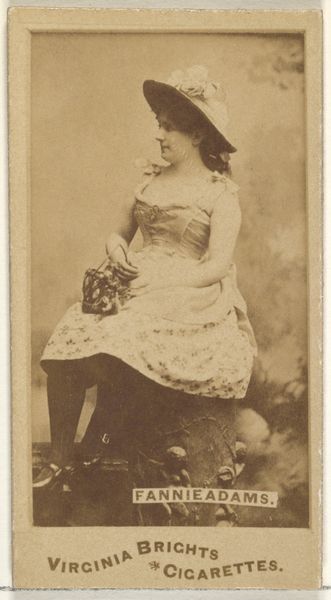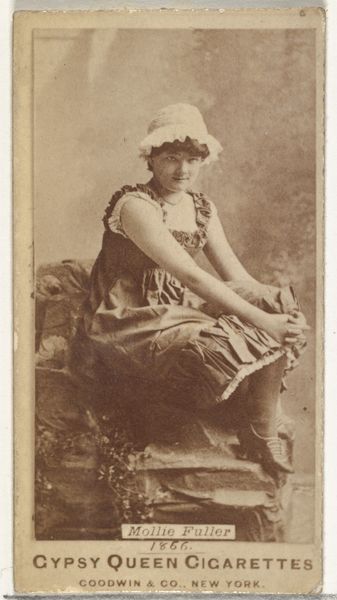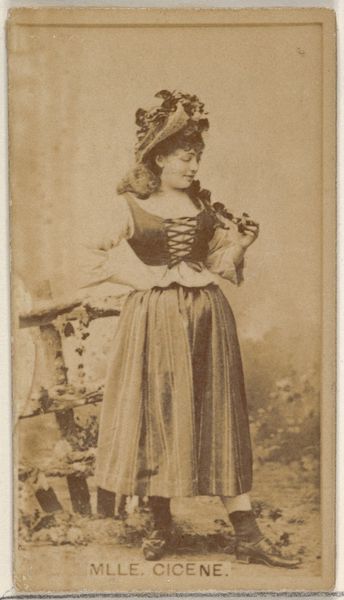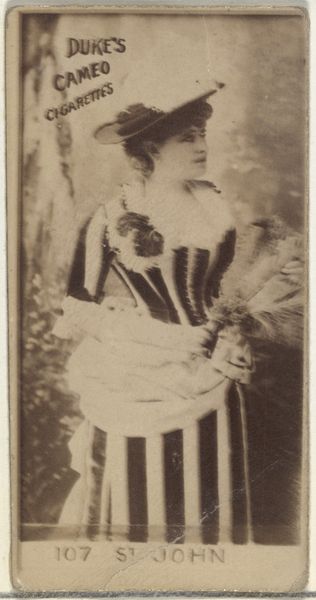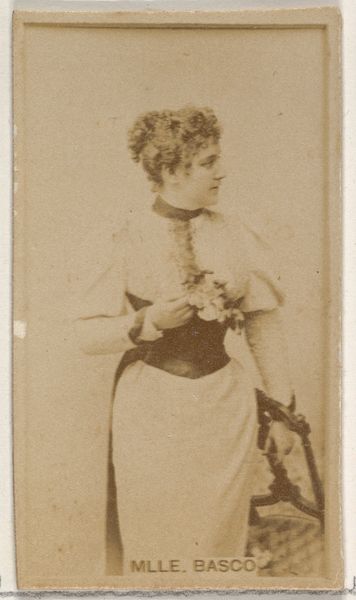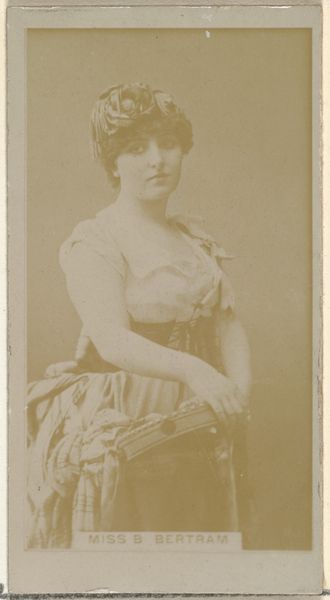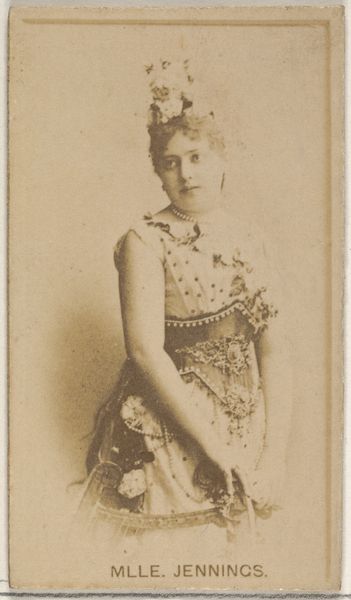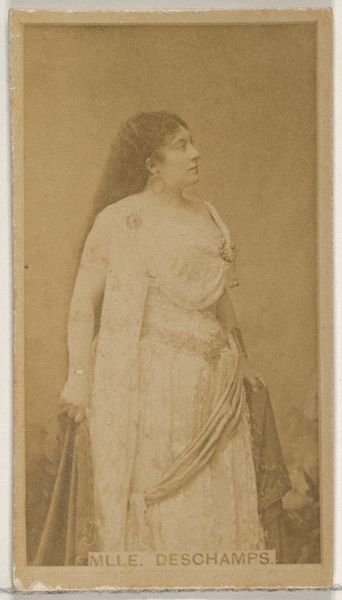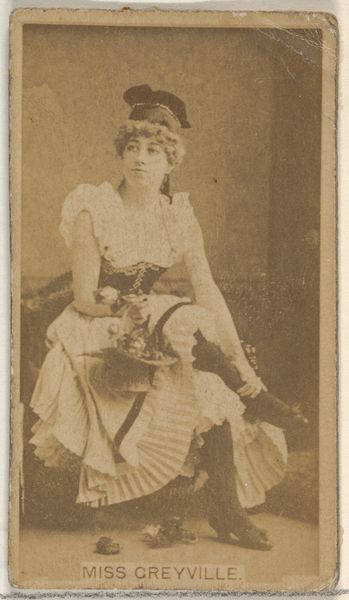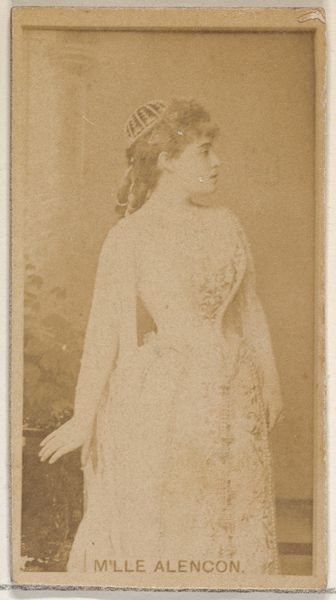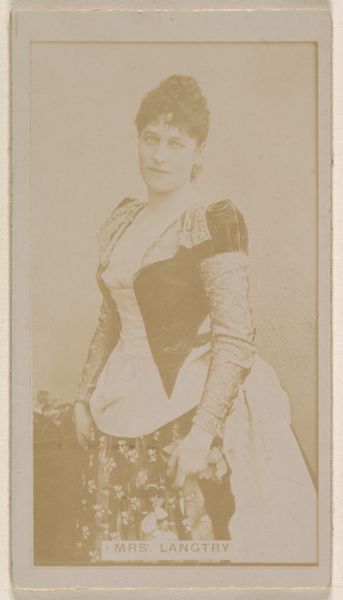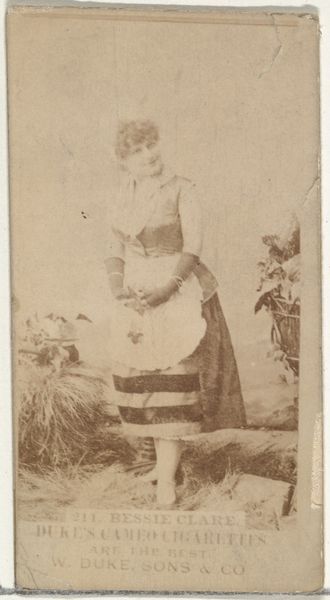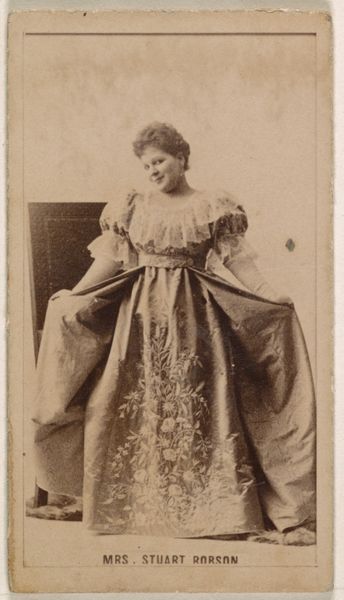
photography, gelatin-silver-print
#
portrait
#
photography
#
portrait reference
#
gelatin-silver-print
#
19th century
#
united-states
#
portrait drawing
Dimensions: 3 7/16 x 2 1/8 in. (8.73 x 5.4 cm) (image)3 3/4 x 2 5/16 in. (9.53 x 5.87 cm) (mount)
Copyright: Public Domain
Curator: Looking at this gelatin-silver print entitled "Tostee," produced circa 1867 by Jeremiah Gurney, now in the collection of the Minneapolis Institute of Art, I am immediately struck by how formal and posed the sitter appears. Editor: Yes, the formality is clear, but something about the pose and costume also strikes me as playful, theatrical even. Is that riding crop a prop, do you think, or does it signify something more about her station or profession? Curator: That is a curious detail. Gurney's studio was renowned for portraiture of prominent figures, but also catered to a wider clientele wanting to project an image of refinement. The "Tostee" of the title could well be a stage name, referencing her involvement in theater, and thus also explaining the striking choice of costume and theatrical pose. It makes the riding crop then, very likely a symbolic object linked to some performed role, maybe an aristocratic, equestrian character. Editor: The costume is indeed evocative! The details like the frogged closures on the jacket and the ornate headwear are suggestive of military or perhaps Eastern European noble attire. But the almost caricatured presentation points to the theater. It projects power, but it also satirizes power to some degree. The riding crop as a stage prop would contribute to a reading of her theatrical, self-fashioned, and self-possessed persona. Curator: These photographic portraits functioned as important status symbols in the 19th century. Owning them allowed individuals to enter the theater of the middle-class home. However, while photography was initially a tool used by the elites, figures like Gurney also played a vital role in democratizing portraiture, capturing the aspirations and, importantly, performances, of an evolving American society. Editor: Absolutely. What stays with me, then, is the double meaning embedded within the work. We are witness to an enactment of status, made material by photography, in that space of the family photo album, and within that act, a potent message about how social identities are imagined, appropriated, and worn. Curator: An early study in image creation in a still nascent photographic culture, wouldn't you say? Editor: I would indeed, and a testament to photography’s layered symbolism.
Comments
No comments
Be the first to comment and join the conversation on the ultimate creative platform.
